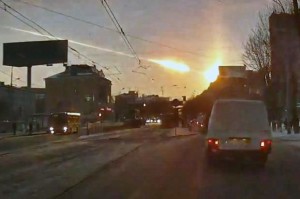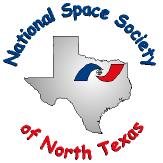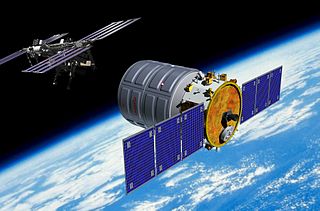NASA and Commercial Spaceflight: September 2013 Update
Moon enthusiasts should have an occasion to celebrate in September. As of this writing, NASA has scheduled the Lunar Atmosphere and Dust Environment Explorer (LADEE) scheduled to launch on Friday, Sept. 6 at 10:27 p.m. CDT. LADEE is a robotic mission that will orbit the moon to gather detailed information about the lunar atmosphere, conditions near the Moon’s surface, and environmental influences on lunar dust. This will be first rocket launch of a NASA science mission from the NASA-Wallops Island Flight Facility in Virginia. Also, LADEE (pronounced “laddie”) will be the first payload launched aboard the five-stage Minotaur V rocket, developed by Orbital Sciences.
Commercial Spaceflight enthusiasts should also have an occasion to celebrate this month. As of this writing, Orbital Sciences has also scheduled the test launch of its Antares rocket and the new Cygnus capsule, also from NASA-Wallops, but this time to the International Space Station (ISS) on Tuesday, Sept. 17 at 10:16 a.m. CDT. This will be Orbital’s second test launch of Antares, the first launch of Cygnus, and the first time that Cygnus will berth with (be attached to) ISS. For this test launch, Cygnus will deliver up to 4,400 lbs. of payload (food, clothing, experiments, and equipment) to ISS. Upon the successful completion of this test launch, Orbital will be the second Commercial Spaceflight company to have launched to ISS. Then in 2014, Orbital will begin its NASA Commercial Resupply Services (CRS) contract for eight launches, scheduled to deliver a total of 44,000 lbs. of payload to ISS. The first successful Commercial Spaceflight company, SpaceX, has already begun launches under its NASA CRS contract, and SpaceX has its third (SpX-3) of twelve contracted launches scheduled for Dec. 9.
Additionally, advancements continue with the development of the NASA Space Launch System (SLS), the rockets that will take astronauts beyond the Moon, to Near Earth Asteroids (NEAs), and to Mars. In August, NASA created a rocket engine injector using “selective laser melting” (a type of 3-D printing). That rocket engine injector will channel and mix propellants during a rocket launch. This 3-D printed injector has only two parts, whereas 115 parts have been required to create such an injector by traditional means. After fabrication, the injector was installed in a rocket engine, then test fired at 6,000 degrees F at 1,400 psia pressure, and it performed flawlessly. This 3-D printing technology has the potential for significant time and cost savings required for the development of the complex rocket engine parts designed for the heavy-lift NASA SLS rockets.
Wishing much continued success to NASA and Commercial Spaceflight companies – especially Orbital Sciences – in September 2013 and beyond. If these or any other rocket launches are not being covered by the cable news stations, try NASA-TV and/or http://www.nasa.gov/.
Who says that NASA hasn’t done anything since they retired the Space Shuttles?
Ken Ruffin is the chapter president of the National Space Society (NSS) of North Texas, which supports Science, Technology, Engineering, and Math (STEM) education, and space science and space development, throughout the Dallas-Ft. Worth (DFW) metro area and beyond. Additionally, Ken has been a Trekkie since 1974.
For more information in the Dallas-Ft. Worth metro area, go to http://www.nssofnt.org/, and consider attending a NSSNT chapter meeting!
10,000 Near Earth Objects, and a Pleasantly More Assertive NASA
On June 18, 2013, Asteroid 2013 MZ5 was originally detected, and by June 24, it was officially identified as the 10,000th Near Earth Object (NEO – asteroids and comets whose orbits approach or cross Earth’s orbit) to be discovered. Asteroid 2013 MZ5 is approximately 1,000 feet (300 meters) across. Its orbit is well understood, and it will not approach close enough to Earth to be considered potentially hazardous. Although 10,000 NEOs may seem to be a huge number, less than 1% of NEOs believed to be 100 feet or larger (large enough to “cause significant devastation” according to NASA) have been detected. How significant would the devastation be from a 100 foot Near Earth Asteroid (NEA)? Imagine a 100 foot NEA striking a city with a population of millions, and leaving a crater where that entire city used to be. That certainly qualifies as significant devastation.
 The February 15 NEA airburst over Chelyabinsk, Russia (which injured approximately 1,000 people), brought worldwide media attention to that NEA, if only for that weekend. Since then, NASA has increased its efforts to request from the U.S. Congress the additional funding needed to identify and categorize NEOs. (Since there are believed to be considerably more NEAs than near Earth comets, the term NEA tends to be more commonplace.) Time will tell if that additional funding is approved.
The February 15 NEA airburst over Chelyabinsk, Russia (which injured approximately 1,000 people), brought worldwide media attention to that NEA, if only for that weekend. Since then, NASA has increased its efforts to request from the U.S. Congress the additional funding needed to identify and categorize NEOs. (Since there are believed to be considerably more NEAs than near Earth comets, the term NEA tends to be more commonplace.) Time will tell if that additional funding is approved.
The National Space Society of North Texas (NSS-NT)
 Tired of waiting months – or years – to hear about the next exciting space mission? Did the August 2012 media coverage of Curiosity make you curious, then leave you with a feeling that could be called Space Withdrawal Sickness? Are you now thinking of telling someone that you have SWS? Well, if you have answered “yes” to any of these questions, then the National Space Society of North Texas (NSS-NT) just might be the place for you.
Tired of waiting months – or years – to hear about the next exciting space mission? Did the August 2012 media coverage of Curiosity make you curious, then leave you with a feeling that could be called Space Withdrawal Sickness? Are you now thinking of telling someone that you have SWS? Well, if you have answered “yes” to any of these questions, then the National Space Society of North Texas (NSS-NT) just might be the place for you.
WWEnd has invited NSS-NT to post a new space article each month on the blog, and here we are with our first post. All of WWEnd’s space enthusiasts can rest assured that NSS-NT is keeping apprised of the latest and greatest news in space travel and space development. NSS-NT is the Dallas/Ft. Worth metro area – and beyond – chapter of the National Space Society (NSS). Both the Chapter and the HQ are celebrating 25th anniversaries in 2012. We are here to stay.

So, Mr. Space Guy, nothing has happened in space recently, except the MSL/Curiosity landing on Mars in August and the SpaceX Mission in October, right? WRONG! At this moment, NASA has dozens of active missions studying the Sun, four of our solar system’s planets, our Moon, a variety of space telescopes, and Expedition 33 aboard the International Space Station (ISS). Also, there are other NASA Missions currently en route to our solar system’s largest planet, to the largest asteroid, to a famously-demoted former planet and its neighbors, and two other NASA missions en route to being the first of humankind’s creations to leave our solar system. I won’t even mention all the successful completed missions!
What do you mean, dozens of Missions? The only space news I’ve seen all year has been the Curiosity landing, two SpaceX missions, and shuttles going to museums! The news media covers what is believed to be of interest to the majority of the public. However, NSS-NT presents what matters to “space enthusiasts”. There is a great deal of current space news, and there is much more to come.
 Want, or need, more info? Go to http://www.nssofnt.org/, contact nssofnt@yahoo.com, and of course check here for the next monthly post. Also, on the second Sunday of each month in the DFW metro area, NSS-NT has a presentation of new information from NASA, commercial spaceflight (including SpaceX), NSS, and/or related organizations, and visitor admission is free. Our November meeting speaker is a former NASA engineer! Thanks for your attention, and we look forward to hearing from you.
Want, or need, more info? Go to http://www.nssofnt.org/, contact nssofnt@yahoo.com, and of course check here for the next monthly post. Also, on the second Sunday of each month in the DFW metro area, NSS-NT has a presentation of new information from NASA, commercial spaceflight (including SpaceX), NSS, and/or related organizations, and visitor admission is free. Our November meeting speaker is a former NASA engineer! Thanks for your attention, and we look forward to hearing from you.



















 Full Details
Full Details





